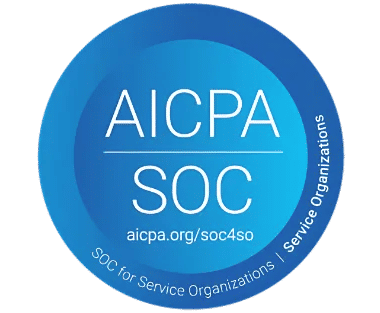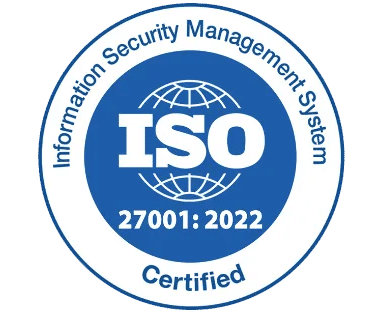What do you mean by OCR? Understanding the Complete Process

In today’s fast-paced world, managing expenses quickly and accurately is more important than ever.
This technology speeds up invoice processing, reduces human errors, and keeps financial records more reliable. It can also integrate smoothly with accounting and ERP systems, creating a automates workflow for managing accounts with OCR billing help.
What is OCR in expense management?
OCR technology in expense management is a smart tool that automates the process of extracting data from invoices, whether they’re paper or digital.
Using advanced algorithms, it reads and converts printed or handwritten text on invoices into machine-readable data, saving businesses from the hassle of manual data entry. With OCR, details like invoice numbers, dates, vendor names, itemized charges, and payment amounts are captured quickly and accurately.
According to studies, businesses using OCR technology have seen up to a 70% reduction in manual data entry errors and a 50% increase in processing efficiency. On average, companies can process invoices and expense reports 3-5 times faster with solutions compared to traditional methods
What is manual invoicing process?
The manual invoicing process involves creating, processing, and managing invoices without the use of automation tools or software. This traditional approach relies on physical documents, manual data entry, and human intervention at every step. Here’s an overview of the process:
Steps in Manual Invoicing
1. Invoice Creation
- Invoices are created manually using tools like spreadsheets or word processing software.
- All details, including invoice numbers, dates, client information, item descriptions, quantities, and amounts, are entered by hand.
2. Document Printing and Distribution
- The completed invoice is printed or written out.
- It’s then sent to the recipient via mail, fax, or email as an attachment.
3. Data Entry and Recording
- Invoice details are recorded manually in ledgers or accounting systems for tracking purposes.
- This requires duplicating efforts, as the same information is entered multiple times.
4. Approval Process
- The invoice must pass through several approval stages within an organization.
- Each department reviews and signs off on the invoice, which can take time and cause delays.
5. Payment Matching
- Payments received are manually matched to the corresponding invoices.
- This often involves cross-referencing purchase orders, receipts, and invoices to ensure accuracy.
5. Follow-Up and Record-Keeping
- If payments are delayed, follow-ups are done through phone calls or emails.
- Invoices are stored as physical copies or scanned into basic systems for future reference.
Challenges of Manual Invoice Processing
- Time-Consuming Paper Processes
Sorting, organizing, and storing paper invoices takes a lot of time, especially for businesses handling high volumes. It’s inefficient and increases the chances of losing or misplacing documents, which further delays processing. - Prone to Human Error
Mistakes during manual data entry—like entering the wrong amount or mismatching details—are common. These errors can cause payment delays, strained vendor relationships, and additional costs to fix the problems. - Long Approval Delays
Invoices often need approvals from multiple departments, which can take time. These delays slow down the entire process, resulting in late payments, potential penalties, and poor cash flow management. - High Costs
Manual processes require significant time and resources. From paying staff to handle invoices to storing physical documents, the expenses add up and hurt profitability. - Matching Problems
Manually matching invoices to purchase orders and receipts can lead to mismatches. These issues delay payments and require extra effort to resolve, impacting financial accuracy and compliance. - Difficulty Scaling
As businesses grow, manual processes can’t keep up with the increasing number of invoices. Hiring more people to manage the workload isn’t always practical, limiting scalability and efficiency. - Data Inconsistencies
When multiple people handle data entry, inconsistencies are bound to happen. This can lead to inaccurate financial reports, requiring frequent checks and corrections to maintain accuracy. - Risk of Duplicate Payments
Duplicate invoices or data entry errors increase the chances of paying the same invoice twice. This creates financial losses and adds extra effort to identify and resolve the mistakes.
How Does OCR Invoice Processing Work?
OCR invoice processing is a smart, automated way to extract data from invoices and streamline the invoice-to-pay process. Here’s how it works:
- Uploading the Invoice
The process starts by uploading a digital copy of the invoice into the software. This can be done by scanning a paper invoice or directly uploading a file like a PDF or image. The software then analyses the document to prepare it for data extraction. The clearer the upload, the better the results. - Improving Image Quality
To ensure accurate data capture, the software enhances the uploaded image. It adjusts brightness, contrast, and removes any visual noise or distortions. These tweaks make it easier for the software to identify and extract the text correctly. - Recognizing Text
Once the image is ready, the software uses advanced algorithms to read and recognize the text on the invoice. It separates text from images and other elements, converting the text into machine-readable data. Key details like vendor names, invoice numbers, dates, and totals are identified at this stage. - Extracting Data
The recognized text is then processed to extract relevant information, such as invoice numbers, dates, vendor details, line items, quantities, prices, and totals. This data is organized and formatted for smooth integration with accounting or accounts payable systems. - Validating Data
The extracted data is checked for accuracy by comparing it to predefined rules or templates. This validation step ensures that the information is correct, reducing the chance of errors and minimizing the need for manual review. - Handling Exceptions
If the software encounters unclear or ambiguous information, it flags these as exceptions. These flagged areas can be reviewed manually to ensure nothing is missed, keeping the data accurate and reliable. - Exporting to Systems
After validation, the data is automatically sent to the accounts payable system or other financial software. This eliminates the need for manual data entry, speeds up the workflow, and reduces the risk of errors or duplicate entries. - Archiving for Future Use
Finally, the processed invoice and its data are securely stored in a digital archive. These files are easily searchable, making it simple to retrieve them for audits, reporting, or compliance purposes.
Why It’s a Game-Changer
OCR invoice processing simplifies and speeds up the entire workflow, improves data accuracy, and helps businesses maintain better financial records. It’s an essential tool for modern businesses looking to reduce manual effort and stay efficient.
OCR Invoice Processing Methods
1. Templates-based OCR
Templates-based OCR uses predefined templates to recognize and extract data from invoices. Each template is designed for a specific invoice format, allowing the software to accurately capture data based on consistent patterns. While effective for standardized invoices, it may struggle with new or varying formats.
2. Rule-based OCR
Rule-based OCR follows a set of predefined rules to identify and extract data from invoices. These rules specify key details like vendor names, invoice numbers, and amounts, ensuring flexibility across different formats. However, it requires regular updates to maintain accuracy.
3. Cloud-based OCR
Cloud-based OCR utilizes cloud resources for data extraction and processing, offering scalability and easy integration with other cloud-based systems. This subscription-based approach provides businesses access to advanced technology without needing extensive on-premises infrastructure. Cloud solutions also offer real-time updates and continuous improvements.
4. Machine Learning-based OCR
Machine learning-based OCR employs artificial intelligence algorithms to enhance data extraction accuracy over time. These algorithms learn from past data and refine their ability to handle complex invoices with varying layouts and formats, making it highly adaptable.
5. On-premises OCR
On-premises OCR is installed locally on a company’s servers, providing full control over data security and privacy. This method is ideal for businesses with strict data governance policies, though it requires significant upfront investment and ongoing maintenance.
These methods cater to different business needs, offering tailored solutions for varying invoice processing requirements.
Types of Accounts Payable Documents That Can Be Extracted Using OCR
1. Invoices
Invoices are the most processed accounts payable documents with OCR technology. The software extracts key details like invoice number, date, vendor information, line items, quantities, prices, and total amounts, streamlining data entry and reducing manual effort.
2. Receipts
OCR software can process receipts by capturing information such as date, vendor name, items purchased, quantities, prices, and total amounts. This automates receipt handling, saving time on manual data entry and improving expense tracking for better spending visibility.
3. Tax Documents
Tax documents like tax invoices and credit notes can be processed using technology. The software extracts essential data such as tax identification numbers, invoice numbers, dates, and amounts, ensuring accurate tax reporting and compliance.
4. Payment Remittances
OCR technology can extract data from payment remittances, such as payment dates, amounts, and references to invoices. Automating this process improves cash flow management and ensures timely reconciliation of payments, reducing discrepancies in accounts payable.
5. Purchase Orders
OCR technology extracts data from purchase orders, including order numbers, dates, vendor details, item descriptions, quantities, and prices. This simplifies the reconciliation process between invoices and purchase orders, enhancing accuracy and efficiency.
6. Expense Reports
OCR software processes expense reports by extracting details like employee names, dates, expense categories, amounts, and descriptions. Automating this reduces manual work, boosts accuracy, and streamlines reimbursement workflows, helping businesses manage employee expenses effectively.
7. Credit Memos
Importance of OCR Invoice Processing in Accounts Payable
Automates Invoice Processing
OCR invoice processing automates the entry of invoice data, reducing the need for manual input. This speeds up the workflow, minimizes errors, and allows accounts payable teams to focus on more strategic tasks. By automating repetitive processes, businesses improve efficiency and cut costs. Faster invoice approvals and payments enhance vendor relationships and optimize cash flow management.
Converts Handwritten Text to Digital
This technology transforms handwritten invoices into digital data, making them easier to manage and process. While recognizing handwritten text can be challenging, modern OCR solutions provide high accuracy, reducing manual effort and ensuring data consistency. This automation speeds up processing, handling various invoice formats seamlessly.
Automatically Extracts Information
Software automatically extracts essential information from scanned images of invoices, including invoice numbers, vendor names, dates, and amounts. This reduces manual data entry, ensuring accurate and efficient processing for timely payments and better financial management.
Produces Scanning Codes
OCR can generate scanning codes like barcodes or QR codes on invoices, simplifying tracking and retrieval. These codes streamline the invoice workflow, saving time searching for specific documents and enhancing overall efficiency.
Speeds Up Invoice Processing
Significantly speeds up invoice processing, from receipt to payment. By automating data extraction and validation, it minimizes manual intervention and accelerates approval processes. Faster processing boosts cash flow and strengthens vendor relationships, allowing finance teams to focus on more strategic initiatives.
Ensures a Systematic Digital Filing System
This technology creates a structured digital filing system for invoices and related documents. Digital storage simplifies retrieval and management of electronic invoices, reducing reliance on physical files and minimizing the risk of lost documents. This supports compliance by maintaining accurate and accessible records, enhancing overall efficiency.
Benefits of OCR Invoice Processing in Accounts Payable
Increased Efficiency and Time Savings
OCR invoice processing automates data entry and validation, significantly reducing the time needed to process each invoice. The accounts payable workflow, enabling businesses to handle more invoices in less time while reallocating resources to higher-value activities, boosting overall efficiency. Additionally, it provides real-time visibility into invoice status and financial metrics, aiding in better decision-making and strategic planning.
Lower Risk of Errors
By automating data extraction and entry, this technology reduces the risk of human errors associated with manual invoice processing. Automated data validation ensures accurate information, minimizing discrepancies in financial records and improving the reliability of accounts payable operations. This leads to more consistent financial reporting and enhanced trust in the accuracy of financial statements.
Cost Savings
OCR technology automates invoice processing, eliminating the need for manual labour and reducing operational costs related to paper-based processes, storage, and administrative tasks. By improving accuracy and speeding up processing times,this helps businesses save money and enhance their bottom line. Additionally, reducing physical storage needs supports environmental sustainability and further cost reductions.
Improved Data Accuracy
OCR technology boosts data accuracy by automating the extraction and validation of invoice details. This reduces errors and discrepancies in accounts payable records, ensuring more precise financial reporting and better business decision-making. Enhanced accuracy also lowers the risk of financial penalties and compliance issues due to incorrect data.
Digitizes Invoice Archiving
Software digitizes invoice archiving, simplifying storage, searching, and retrieval of documents. Digital archiving minimizes reliance on physical storage, reduces the risk of lost or misplaced documents, and ensures easy access for audits and compliance. This approach facilitates faster retrieval of historical data for trend analysis and financial reviews.
Boosts Accounting Efficiency
Technology automates repetitive invoice tasks, freeing up accounting staff to focus on strategic and analytical work. This enhances overall efficiency, improves financial reporting accuracy, and supports better decision-making. It also allows accounting teams to handle larger volumes of work without needing to expand their resources.
Improved Vendor Relationships
Faster and more accurate invoice processing through OCR technology ensures timely vendor payments. This efficiency builds strong vendor relationships, reduces disputes, and minimizes payment delays, fostering a positive reputation within the supply chain. Timely payments may also lead to better vendor terms and discounts.
Increases Scalability
Technology enables businesses to scale their accounts payable operations effortlessly, without requiring substantial increases in resources. Automated processing supports growing volumes of invoices, allowing businesses to grow and expand without proportional headcount or infrastructure increases. This scalability adapts seamlessly to changing transaction volumes.
Allows Remote Access
With OCR technology, invoice processing can be managed remotely, offering flexibility for accounts payable teams to work from various locations. This remote access is valuable in hybrid or remote work environments, ensuring continuous and efficient financial operations regardless of location. It also supports disaster recovery and business continuity by decentralizing data access.
Simplified Auditing and Compliance
Simplifies the auditing process by providing easy access to digital records and accurate financial data. Automated data extraction and validation ensure compliance with regulatory standards, reducing errors and discrepancies during audits, and enhancing financial transparency. This streamlines audits, shortens timelines, and minimizes associated costs.
Limitations of Automated Invoice Scanning
Incomplete Removal of Manual Verification
Even with advanced OCR technology, some level of manual verification is often needed to ensure accurate data.The software can struggle with poorly scanned documents, unclear text, or non-standard invoice formats, requiring manual review and correction. This ongoing need for manual intervention limits the full potential of automation and can slow down efficiency.
Varying and Complex Invoice Formats
Invoices come in different formats and layouts, which can be challenging for systems. Complex or non-standard formats may lead to inaccurate data extraction, requiring custom templates and rules. This increases the complexity and cost of implementation, along with the need for continuous updates to handle diverse formats.
Accuracy Issues with Handwritten Text
Handwritten invoices or notes pose a significant challenge for OCR technology. While modern solutions have improved in recognizing handwriting, accuracy is still lower compared to printed text. Handwriting recognition often requires manual verification, reducing the overall efficiency of automated processing. Additionally, the variability in handwriting styles can lead to inconsistent data capture and potential errors.
Complexity in Implementation
Implementing this technology can be complex, requiring significant time, resources, and training. Integrating OCR with existing systems, customizing templates, and ensuring user support can be resource intensive. Smaller businesses may find this overwhelming. Moreover, the initial setup and integration phases can disrupt existing workflows.
Limited Contextual Understanding
This software struggles to fully understand the context of invoice data. While it can accurately extract text, it may misinterpret meaning or fail to capture complex relationships between data points. This limitation requires additional validation and review to ensure accurate data capture.
Over-Reliance on Scan Quality
OCR accuracy depends heavily on high-quality scans. Poorly scanned documents or low-resolution images reduce the effectiveness of data extraction and often require manual intervention. Maintaining consistent scan quality can add operational complexity, especially for businesses handling large volumes of invoices.
Handling Non-Text Elements
This technology is designed to recognize text but may struggle with non-text elements like logos, stamps, special symbols, or signatures. These elements can interfere with data extraction, leading to errors or incomplete data capture. Additional processes are needed to handle these non-text elements effectively, which can increase complexity.
How Machine Learning Improves OCR-Based Invoice Processing
Continuous Improvement
Machine learning helps OCR systems continuously learn from new data and user feedback, improving accuracy and performance over time. By identifying patterns and refining algorithms, machine learning reduces errors and adapts to evolving document formats, maintaining high accuracy in invoice processing.
Reduction of Errors
Machine learning enhances OCR’s ability to detect and correct errors in invoice data extraction. By comparing extracted data to expected patterns and historical records, it flags discrepancies for review, minimizing the need for manual corrections and streamlining workflows.
Contextual Extraction of Line-Item Data
With machine learning, OCR software performs contextual extraction of complex line-item data, capturing details like item descriptions, quantities, and prices accurately. This ensures comprehensive data capture, even from invoices with intricate formats.
Automated Invoice Routing
Machine learning automates the routing of invoices to approvers based on predefined rules and historical patterns. This speeds up approval processes, reduces delays, and enhances overall efficiency.
Improved Character Recognition
Machine learning improves OCR’s ability to recognize characters accurately, even in varying fonts, sizes, and orientations. By training on large datasets, it identifies and differentiates between similar characters, ensuring consistent and reliable data extraction.
Integrates Seamlessly
Machine learning-based OCR solutions seamlessly integrate with accounts payable systems, automating the entire invoice processing workflow. This enhances efficiency by reducing manual effort and speeding up invoice processing.
Enhanced Pattern Recognition
Machine learning excels at recognizing patterns in invoice data, such as recurring vendors and line-item structures. This allows software to categorize and process invoices automatically, improving accuracy and processing speed.
Automated GL Code Matching
Machine learning improves OCR’s ability to automate the matching of invoice data to general ledger codes. By learning from past transactions, it predicts appropriate ledger codes for new invoices, ensuring accurate financial records.
Combining OCR with Manual Review
While machine learning streamline invoice processing, they still have limitations. Complex invoices, poor-quality scans, or unique formats often require manual review to guarantee accuracy.
Manual review plays a vital role in validating data, managing exceptions, and enhancing OCR models. This combination ensures that businesses can identify and correct errors that automated systems may overlook, leading to more precise and efficient processing.
Manual Review and Corrections
Manual review is crucial for ensuring the accuracy of data extracted by OCR, especially for intricate or unclear invoices. Human reviewers carefully correct misidentified data and ensure that company policies are upheld. This step is essential for maintaining data integrity, as this may struggle with certain formats or handwritten details. By combining manual review with automation, businesses can achieve higher accuracy in invoice processing.
Exception Handling
This occasionally flags exceptions such as missing or ambiguous data fields that require human intervention. Manual review ensures these issues are resolved accurately and efficiently, preventing delays. Addressing flagged exceptions promptly helps businesses avoid costly errors and maintain smooth operations.
Feedback Loop for OCR Improvement
Manual review provides essential feedback to improve accuracy over time. By analysing errors and corrections, machine learning models can be retrained to recognize similar patterns. This continuous feedback loop enhances the system’s ability to handle a variety of invoice formats and minimizes errors.
Shifting Focus on Complex Cases
Manual review allows accounts payable teams to focus on more complex invoices that require in-depth scrutiny. While OCR handles routine tasks, human reviewers can handle invoices with unique terms or unconventional formats that automation may not process effectively. This division ensures all invoices are accurately processed, especially those with high-value or intricate details.
Manual Review of Flagged Invoices
Invoices flagged by OCR for errors or discrepancies go through manual review to ensure accuracy. This process involves cross-checking data against original documents, ensuring compliance, and addressing any anomalies. Regular manual review is crucial for maintaining the integrity of financial records and preventing costly errors.
Suggestions for Businesses
Businesses should explore OCR solutions that include managed services for manual reviews. Managed services are especially valuable for handling complex or non-standard invoices, improving accuracy, and reducing operational costs.
Best Practices for Implementing OCR in Accounts Payable
Successfully implementing this technology requires careful planning. By following best practices, businesses can ensure seamless integration, enhance data accuracy, and improve efficiency in managing exceptions and anomalies.
Determine Your Business Needs and Goals
Before adopting this software, assess your business needs and goals. Identify pain points in your accounts payable process and explore how this software can address them. Set clear objectives, such as reducing manual data entry or improving accuracy, to guide your implementation strategy and measure success.
Evaluate OCR Solutions
Choosing the right OCR solution is essential for success. Compare different software options based on features, accuracy, ease of integration, and scalability. Consider whether a cloud-based or on-premises solution best suits your business. Request demos and conduct pilot tests to evaluate performance and compatibility.
Standardize Document Formats and Layouts
Standardizing document formats can significantly enhance accuracy and efficiency. Collaborate with vendors to adopt standardized invoice formats that OCR software can easily process. Clear templates reduce errors and streamline integration, lowering processing time and costs.
Ensure High Data Quality During Pre-Processing
High-quality scanned invoices are critical for successful OCR processing. Implement pre-processing steps such as image enhancement and noise reduction to improve scan quality. Using tools to correct common errors ensures accurate OCR output.
Integration with Existing Systems
Seamless integration of OCR technology with AP and ERP systems optimizes workflow efficiency. Ensure that the solution integrates smoothly with your financial software to automate data entry, validation, and approval processes. Proper integration minimizes manual effort and ensures accurate data flow across systems.
Customize and Train the System
Customizing and training systems to recognize specific invoice formats improves accuracy. Work with OCR vendors to configure the system according to your business needs and provide training data for enhanced performance. Regular updates ensure the system adapts to new document formats.
User Training and Support
Provide thorough training for your accounts payable team to effectively use OCR systems. Ensure they understand the system’s capabilities, limitations, and best practices. Hands-on training and accessible resources help teams maximize the benefits of the solution.
Look for Managed Services for Manual Reviews
Consider this solutions that offer managed services for manual reviews. These services provide human oversight to verify data, handle exceptions, and offer ongoing improvements. Managed services are essential for processing complex or non-standard invoices with high accuracy.
Continuous Improvement
Implementing OCR is an ongoing process that requires continuous improvement. Regularly monitor system performance, track error rates, and gather feedback to identify areas for enhancement. Collaboration between IT and accounts payable teams ensures that the OCR system evolves to meet changing business needs.
Expense Tracker 365
Expense Tracker 365 Scan is a cutting-edge solution designed to transform how you handle invoices and manage expenses. With advanced OCR technology, it efficiently captures and processes invoice and expense data, streamlining your accounts payable and expense management workflows for greater accuracy and speed.
The scanner extracts key details from invoices—such as vendor information, invoice numbers, line items, and expense categories—with remarkable precision. Its smart algorithms continuously learn from past data, enhancing accuracy and reducing errors over time. data processing capabilities, Magic Scan prioritizes security with robust features like encryption and secure access controls, ensuring your financial data remains protected and compliant with data regulations.
The seamless integration with your existing accounting systems ensures a smooth transition from invoice and expense receipt to payment. By automating data extraction and validation, Expense Tracker 365 Scan eliminates the need for manual data entry, speeding up the process and minimizing mistakes. This results in faster approvals, timely payments, and stronger vendor partnerships.
In addition to its powerful data processing capabilities, Magic Scan prioritizes security with robust features like encryption and secure access controls, ensuring your financial data remains protected and compliant with data regulations.
Expense Tracker 365 Scan offers a fully automated solution for both accounts payable and expense management, freeing up valuable resources, cutting costs, and empowering you to focus on strategic financial oversight and business growth.
Conclusion
Using OCR in expense tracking software makes managing expenses easier and more accurate. It automates the process of capturing and processing data from invoices and receipts, reducing the need for manual work and minimizing mistakes. With smooth integration, smart algorithms, and strong security features, OCR-powered expense tracking helps businesses stay organized, ensure compliance, and make better financial decisions with less effort.
Frequently Asked Questions
1. What is OCR, and how does it work?
OCR (Optical Character Recognition) is a technology that converts different types of documents, such as scanned paper documents, PDFs, or images, into editable and searchable text. It works by analysing the shapes of letters and numbers in an image and then translating them into machine-readable characters.
2. What are the common use cases of OCR technology?
OCR is used in various applications like:
- Digitizing paper documents for easy storage and retrieval
- Automating data entry for invoices, receipts, and forms
- Extracting information from ID cards and passports
- Converting printed books into editable formats
- Enhancing accessibility for visually impaired individuals
3. Can OCR recognize handwriting?
Yes, advanced OCR systems can recognize handwriting through a feature known as ICR (Intelligent Character Recognition). However, the accuracy depends on the quality of the handwriting, the software used, and the training of the OCR model for recognizing specific styles.
4. What factors can affect OCR accuracy?
OCR accuracy can be impacted by several factors, including:
- Poor image quality (e.g., blurry or low-resolution scans)
- Complex layouts with overlapping text and graphics
- Uncommon fonts or heavily stylized text
- Background noise or shadows in the scanned image
5. Is OCR technology secure for sensitive data?
Yes, OCR technology can be secure, depending on the platform used. Many OCR solutions offer encryption, secure storage, and compliance with data protection regulations like GDPR and HIPAA. When processing sensitive information, it’s essential to choose a trusted provider with robust security measures.










_svxLrd-8yH.png)

_2VYSFUTN5m.png)

_JiluXJRGNl.svg)

_2djTKNocf.png)





_Rapo0hRMBy.png)


























